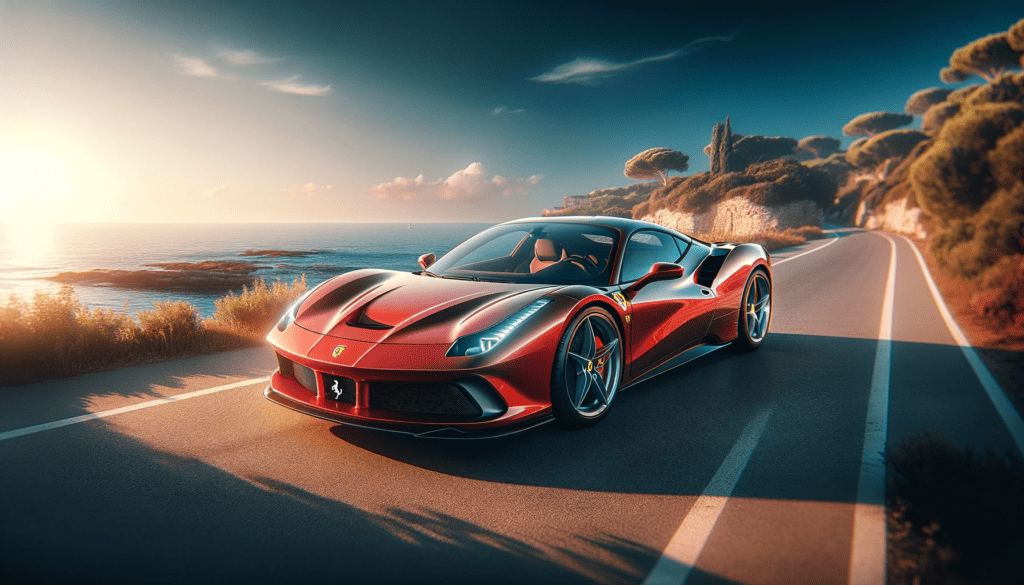The name Ferrari conjures up images of speed, luxury and automotive excellence. This iconic Italian car brand has a rich history dating back to the early 20th century, and has had a lasting impact both on and off the race track. In this blog, we explore the iconic brand’s journey from its humble beginnings to its current status as a globally respected brand, with a look at the challenges and triumphs it has faced.
The Early Years of Ferrari: From Racing Team to Automobile Brand
Ferrari’s history began with the creation of the Scuderia racing team in 1929 by Enzo Ferrari. Initially, the team concentrated on racing Alfa Romeo cars. It was only after World War II, in 1947, that he side introduced its first car of its own, the 125 S, marking the brand’s entry into the world of production cars.
Challenges and Victories in the Early Years
His early years were marked by technological innovation but also financial challenges. World War II had a significant impact on Italian business, and Ferrari was no exception. Despite these challenges, however, Ferrari managed to build its name in motorsports, particularly in Formula One, where it quickly became a dominant force.
The Golden Age: Ferrari in the 20th Century
The 20th century saw Ferrari grow from a small racing team into a symbol of motorsport and luxury. With legendary models such as the 250 GTO and the Testarossa, Ferrari dominated both on the track and on the road.
Technological Innovations and Challenges
This period also witnessed significant technological advances, but also brought its own problems. The oil crisis in the 1970s and changing environmental legislation forced Ferrari to adjust its designs, leading to a new generation of more efficient and environmentally friendly cars.
Issues with Reliability and Competition
Although it was known for its performance, the brand also faced reliability problems during certain periods. Competition from other luxury car brands such as Lamborghini and Porsche put pressure on Ferrari to constantly innovate and improve its technology.
Ferrari in the 21st Century: Adapting to a Changing World
The 21st century brought new challenges and opportunities for the company. With the rise of electric vehicles and autonomous driving technologies, Ferrari had to adapt to a rapidly changing market.
Modernization and Diversification
The company has responded by diversifying its product line, with models such as the Purosangue SUV and the SF90 Stradale, Ferrari’s first plug-in hybrid. This new direction demonstrates Ferrari’s ability to innovate while staying true to its heritage of luxury and performance.
Ongoing Challenges
Despite its success, Ferrari continues to face challenges, including meeting stricter emissions standards and maintaining its exclusive brand image in an increasingly saturated market. The future will undoubtedly bring new challenges, but if history is any indication, Ferrari will face them with confidence and innovation.
Conclusion
Ferrari’s journey from a small Italian racing team to a globally recognized symbol of luxury and performance is a story of tenacity, innovation and passion. Despite the challenges it has faced, the brand remains one of the most respected names in the auto industry. Looking to the future, the company remains a beacon of excellence, ready to adapt and evolve in the rapidly changing world of the automotive industry.
Ferrari’s Financial Growth 2019-2023
Ferrari, known for its luxury sports cars and impressive achievements in the auto industry, has shown steady growth in sales in recent years. Despite global challenges, the company has maintained and strengthened its market position.
| Year | Sales (in billions) |
|---|---|
| 2019 | $4,23 |
| 2020 | $4,22 |
| 2021 | $4,85 |
| 2022 | $5,42 |
| 2023 | $6.19 (through September 30) |
These figures show Ferrari’s ability to grow in a competitive market, underscoring their reputation as a leading brand in the luxury car industry.





Leave a Reply